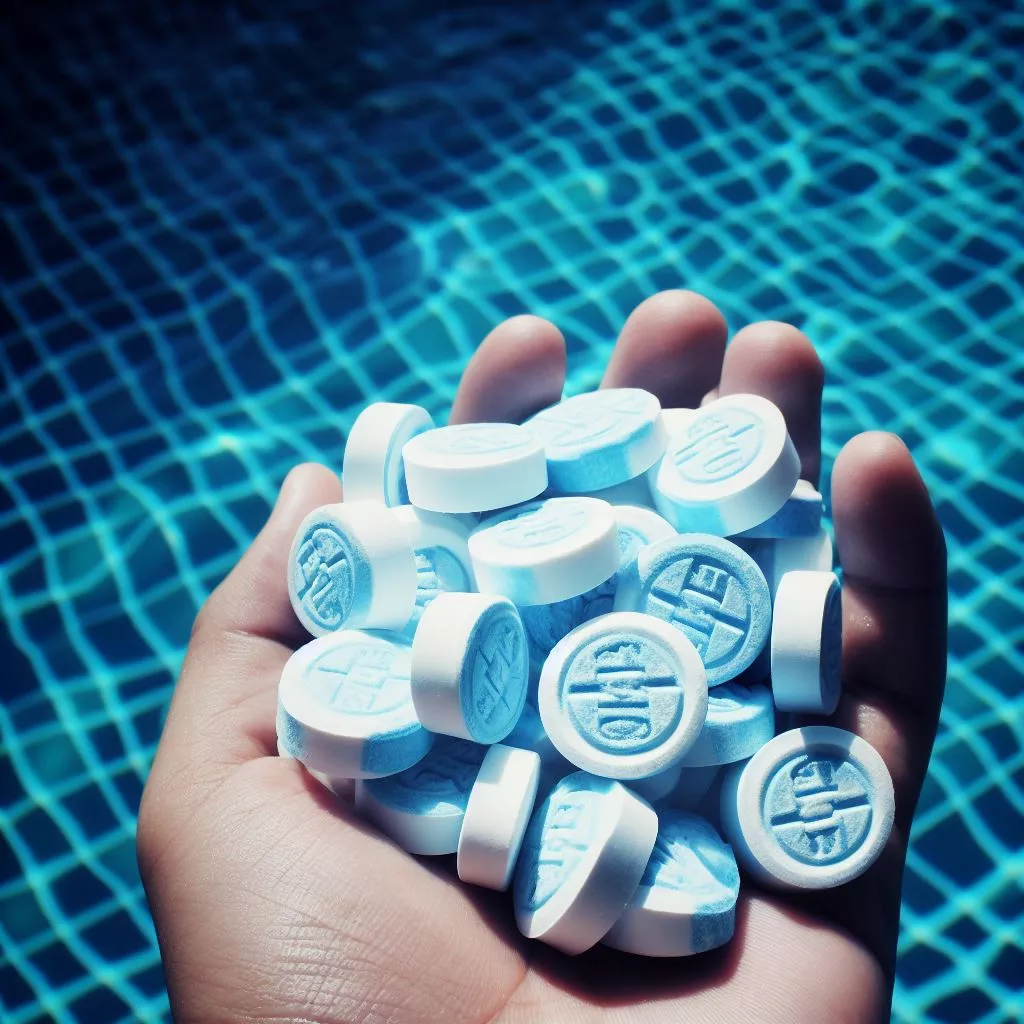Introduction of Chlorine Tablets
Swimming pools have become an integral part of our leisure activities, offering a refreshing escape from the heat and a chance to exercise. However, maintaining the hygiene and safety of these pools is crucial to ensure a pleasant and healthy experience for all users. At the heart of this process lies the humble chlorine tablet—a powerful yet misunderstood tool that effectively keeps the water clean and safe. In this article, we delve into the science behind these pool chlorine tablets, exploring why they are so effective at killing bacteria and viruses.

The Magic of Chlorine
1. Broad-Spectrum Disinfection
Chlorine tablets are renowned for their broad-spectrum disinfection capabilities. They are capable of destroying a wide range of pathogens, including bacterial spores, bacterial reproductive bodies, fungi, and even viruses like hepatitis. This comprehensive disinfection is due to chlorine’s strong oxidizing properties, which disrupt the cell membranes of microorganisms, ultimately leading to their death.
2. Rapid Dissolution and Activation
One of the key advantages of chlorine tablets is their rapid dissolution rate. Once added to the pool water, they dissolve in just 10 minutes, releasing their active chlorine content. This quick activation ensures that the pool water is sanitized swiftly, reducing the risk of pathogen proliferation.
3. Effective Against Algae
Chlorine tablets are not just limited to bacterial and viral disinfection. They are also highly effective against algae, including blue-green algae, red algae, and seaweed. By inhibiting the growth of these nuisance organisms, chlorine helps maintain clear and pristine pool water, enhancing the overall swimming experience.
The Chemistry Behind Chlorine Disinfection
1. Formation of Hypochlorous Acid
When chlorine dissolves in water, it rapidly reacts to form hypochlorous acid (HClO). This acid is the primary active ingredient responsible for the disinfection process. Its effectiveness is influenced by the pH of the water, with lower pH values enhancing its disinfection power.
2. Penetration and Oxidation
Hypochlorous acid penetrates the cell walls of microorganisms, entering their interior. Inside, the chlorine atoms undergo oxidation reactions, disrupting the essential enzymes and proteins necessary for cellular function. This disruption ultimately leads to cell death, effectively eliminating the pathogens from the pool water.
3. Balance of Free and Combined Chlorine
Chlorine in pool water exists in two forms: free chlorine (HClO and ClO⁻) and combined chlorine (chloramines). Free chlorine is responsible for disinfection, while combined chlorine forms when chlorine reacts with organic matter like sweat and urine. Though chloramines have some disinfecting properties, they are less effective and can contribute to unpleasant odors. Regular superchlorination helps break down chloramines, maintaining the balance in favor of free chlorine.

Dosage and Maintenance
1. Optimal Dosage
Maintaining the correct dosage of chlorine tablets is crucial for effective disinfection. Generally, adding 2-4 grams of chlorine per cubic meter of water is recommended. This dosage ensures that the pool water remains adequately sanitized, with a residual chlorine level (often referred to as free chlorine) of around 1-2 ppm.
2. Monitoring Residual Chlorine
Regular monitoring of residual chlorine levels is essential to ensure the effectiveness of the disinfection process. Test kits are readily available and should be used before and after adding chlorine tablets, allowing for precise adjustments to maintain the optimal chlorine level.
3. Timing and Pre-Treatment
It’s advisable to add chlorine tablets to the pool at least 30 minutes before use, allowing for complete dissolution and disinfection. Additionally, pre-treating the water with algaecides and clarifiers can further enhance the effectiveness of chlorine by reducing organic matter and improving water clarity.
Addressing Common Concerns
1. Safety for Swimmers
Contrary to popular belief, properly maintained chlorine levels in pool water pose no risk to swimmers. The amount of chlorine used is carefully controlled to ensure that it remains within safe limits, even for sensitive individuals. However, swimmers with skin conditions or respiratory issues should consult their healthcare providers before entering chlorinated water.
2. Environmental Impact
The environmental impact of chlorine in pool water is often a concern. However, modern pool management practices minimize this impact by using eco-friendly chlorination systems and regularly testing and adjusting water chemistry to maintain optimal conditions. Furthermore, proper disposal of pool water and backwash water can further reduce any potential environmental hazards.
Conclusion
In conclusion, pool chlorine tablets are a vital component of maintaining a safe and hygienic swimming environment. Their broad-spectrum disinfection capabilities, rapid activation, and effectiveness against algae make them an indispensable tool for pool owners and operators. By understanding the science behind their operation and implementing proper maintenance practices, we can ensure that our pools remain a refreshing and healthy oasis for all to enjoy. As we continue to explore new technologies and improve our understanding of water chemistry, the future of pool sanitation looks bright and promising.

 Instant
Quote
Instant
Quote Email
Us
Email
Us